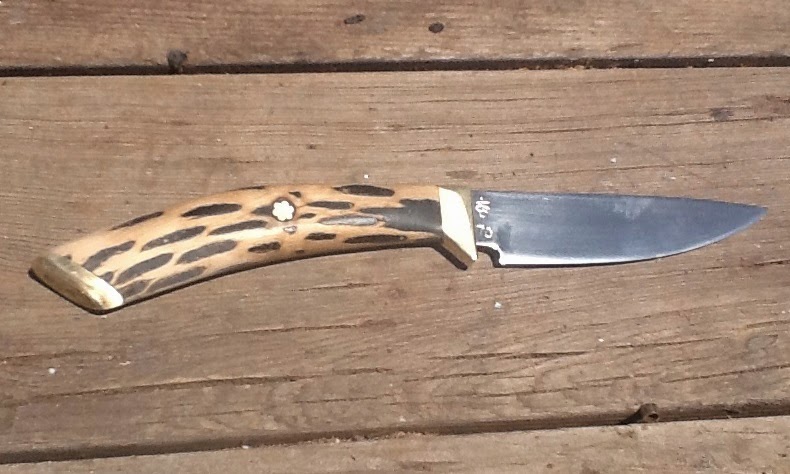As a new bow maker, I wouldn’t call myself a bowyer, I
certainly don’t have any experience, or much other than basic woodworking
skills, and who has relatively successfully made all of one bow, I immediately
did some research on what people thought about different woods. Everyone seems to think that Osage is great,
Yew is great, and lots of other will make a serviceable tool, or that lots of others
are awful.
Looking around for quantification I came across this article
at the Wood Database –
In the article, the author (who, like me, isn’t a bowyer or materials scientist) came up with a formula that he thought might estimate the quality of the wood for making bows. I thought it was interesting.
Then I thought about the scrap wood that I had lying around and remembered that I had a couple of Saltcedar/Tamarisk staffs. I looked at them and decided they were useless for bow making. But it got me thinking, I wonder what the physical properties of Tamarisk are. I checked the wood database, unsuccessfully.
So now I have to try it.
I found a nice 6’-ish 6” diameter log, which is mostly straight, and
split it into 4 staves. Two I had to
shorten due to some branching/knots, and they are closer to 5’. I painted some glue on the ends of all 4 and
put three into the shed to dry some.
I took one of the shorter pieces and started with that –
before it had much chance to dry. I
peeled the bark off the back and brought it down to a single growth ring. Smoothed out the sides and the belly a bit,
tapered the limbs and then put it away for a few days
Despite liking the center cut of the Oak bow, I shaped both
sides of the center, and added a hard maple riser. There is fairly substantial twist in the limbs
at this point…might be something to letting it dry first.
I ordered some more fiberglass tape for the back, and some
real bow epoxy, I can’t say I expect it to work all that much better, but who
knows. They arrived the other day. I also bought another string so I can play
with two bows at once. In the meantime I
foolishly messed with the string of the Oak bow, and I’m not sure
I got it back
to the right length when I realized how stupid that was. Oh well, now I know.
I may start playing with one of the longer pieces too.


The last piece is the current experiment. It is one of the shorter pieces, and
definitely is not as stiff (at this stage) as my oak board bow was - but it isn’t as thick or wide either. I stripped the bark off of it, following a
growth ring – since that is the way most people seem to recommend doing
things.
It’s not straight, has some twist, but I’m plowing ahead
with this one. I will probably back it
with fiberglass again, since it’s pretty cheap, and I think it stiffens things
up nicely, and should keep things from shattering if it all goes wrong.
I’m going to use a hard maple riser this time, rather than
something more exotic, and I’m not going for a center fire this time, since the
stave isn’t quite as wide.
My fancy epoxy came in, and I decided to make the bow
red. Here it is curing with the first
layer of fiberglass. So did my extra string.

We'll see how it progresses from here.



















